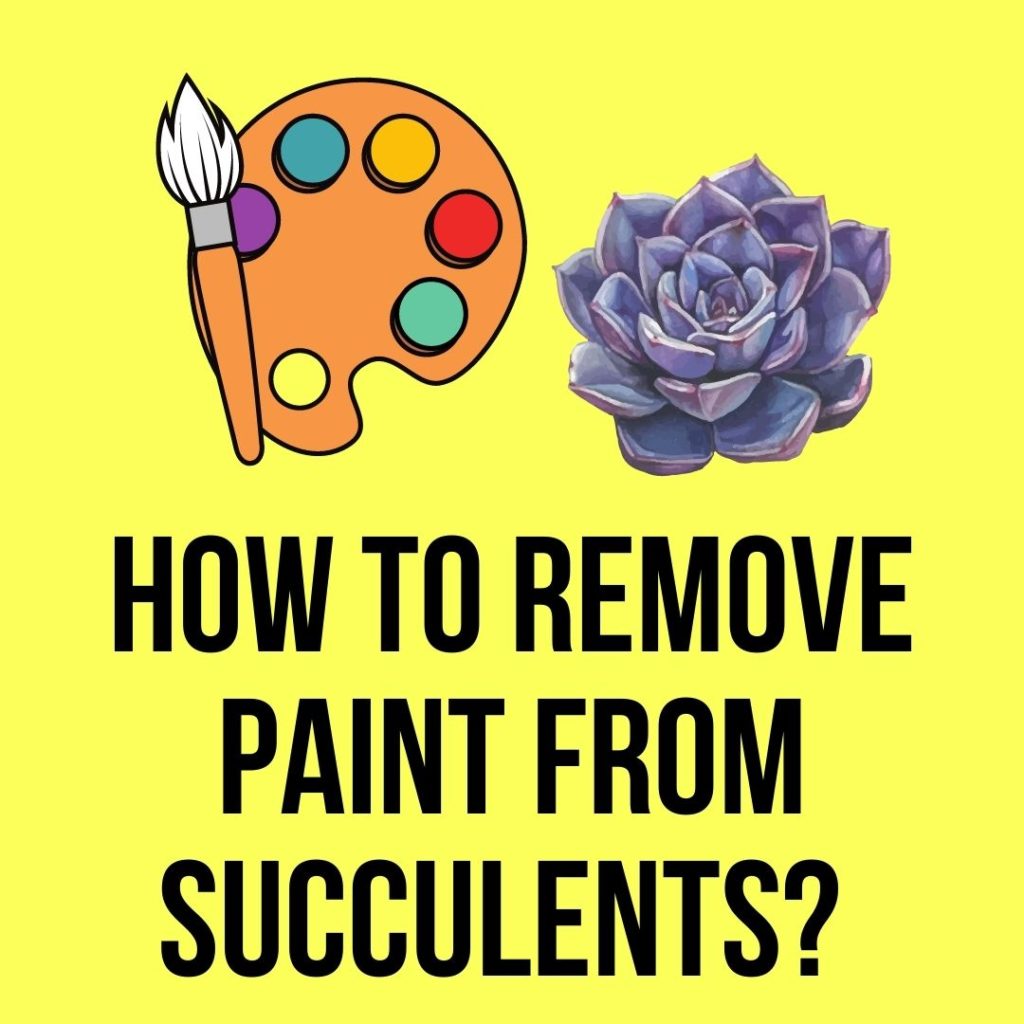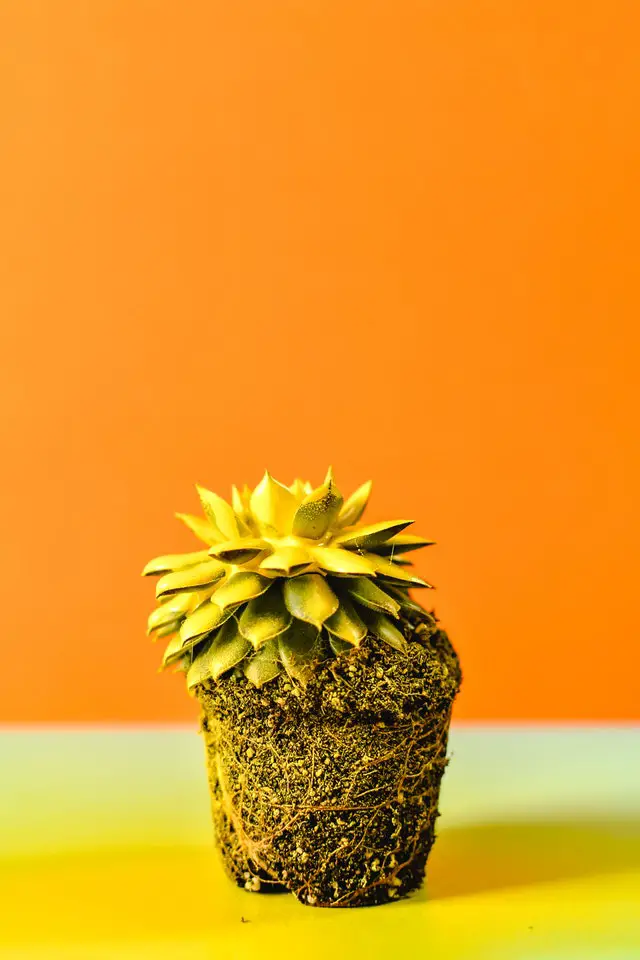Succulents are plants that can survive in dry places and store necessary water in their body. The usual water storage parts are stems and leaves. For these reasons, the leaves and stems are fleshy. Hence, they are called succulents.
And today we are going to answer a common question about succulents, and that is how to remove paint from succulents.
At present, succulents are pretty famous as ornamental or decorative plants. They are now seen on bookshelves, desks, and in people’s living rooms. These plants tend to be advertised as low care plants, and it is valid to a certain extent. The plants have criteria for the environment; if the environment does not suit them, they will die. However, the rate will be much slower than other plants.
Succulents and Misconceptions
It is also not precisely true that succulents can live without no sunlight. There are succulents like Agave, Aloe, and Jade Plant that need full sun to grow properly. However, direct sunlight is terrible for some succulents.
It can turn leaves brown and eventually kill the plant. But it does not mean they do not like sunlight; instead, they thrive in indirect sunlight. These plants need 6 to 8 hours of indirect sunlight every day.
There are shops that sell bright and vibrant succulents. These succulents are deep blue, pastel pink, etc., and are not found in nature. They are usually spray painted and advertised as plants that can survive without sunlight. Covering the leaves and stems with colors means that the succulents cannot absorb sunlight.
Photosynthesis is the process of how plants produce energy to survive; we are all aware of that. Succulents also perform photosynthesis; covering their leaves with colors can be compared with a bird without wings.
The succulents will sometimes adapt and grow out of their paint, but often they will slowly die in a month or two. They will survive this duration because of their stored energy.
So succulents advertised as low care and not needing sunlight are unreal. It is true that they do not need much water and can be left to grow, but the environment needs to imitate their natural habitat.
They need soil with good drainage, indirect sunlight for 5 to 6 hours daily, need to be watered every week and sometimes every day for certain succulents. So they are no plants that can live with total neglect.

How to Remove Paint From Succulents
The artificial colored succulents that are found in stores are commonly spray painted and sometimes hand-painted. The paints they use are mainly water-based or solvent-based. Water-based paints include latex paints, acrylic paints, and primers.
Solvent-based paints, on the other hand, include oil paints, urethanes, and epoxy coatings. Usually, plants are painted with acrylic paints and oil paints.
The other paints can also be used but do not worry. We will go through a step-by-step process of paint removal for all kinds of paint.
Removing Latex Paints
Latex paints are mainly water-based paint mixed with acrylic resins. The paints come in various colors and are mainly used indoors. There is a misconception that they are waterproof, but they are water-resistant.
They will slowly fade away because of moisture. If your succulent is colored with latex paints, you do not need chemicals. It can be removed with water, and any chemicals that are harmful to your skin are also harmful to plants.
For this reason, it is best to use organic and safe methods. Firstly take a piece of cloth and dip it in water and wipe. The wiping process should not harm the tree anyway; keep repeating it every day until your succulent’s actual color becomes visible.
Removing Acrylic Paints
Acrylic paints are also water-based. They are water-based mixed with acrylic resins and particles of pigments. Where latex paints are slow drying indoors paint, acrylic paints are the polar opposite.
They are primarily water-based paint; succulents are painted with. The paints are used outdoors, and they do not crack. However, they are water-based paint in the end, and water is the safest medium to remove them.
For acrylic, the process is the same, dip a piece of cloth in water and wipe your plant. The paint is good on even, hard surfaces but for uneven surfaces like succulents, water is enough to remove it. Keep repeating the routine every day until the paint vanishes completely.
Removing Primers
Primers are used as bottom coats for plants; these are highly adhesive. There is a low chance that your succulent is painted with these paints. However, this is also a water-based paint, and the removal process is also the same as other water-based paints.
Take a piece of cloth, dip it in water and wipe thoroughly. Then keep repeating the process until you see results.
Removing Oil Paints
This is a solvent-based paint; the paint is made by mixing pigment particles with oils. Usually, they use linseed oil, and it dries very slowly. They are suitable for hand paintings and crafts. If the succulent has elaborate patterns or drawings, there is a high chance it is oil paints.
The oil paints cannot be removed by water; they need organic solvents. The common harmless organic solvent is rubbing alcohol. The rubbing alcohol breaks the bonds of solvent-based paints and makes them easier to remove.
Firstly take a piece of cloth or rag and soak it in rubbing alcohol. Then remove the excess alcohol by wringing it and rub the paint off the tree slowly. Keep repeating the process until you are satisfied with the result.
Removing Urethane Paints
There is a very low chance that your plant may be painted with urethane paints. They are mainly used for cars. They are glossy and industrial-grade paint. They are also solvent-based paints, and rubbing alcohol will work on them. So, if your succulent comes in contact with this by accident, conduct the same treatment as oil paints.

Removing Epoxy Coatings
They are one of the most durable paints. Your succulent should never come into contact with this paint in natural circumstances. However, if by accident they do, alcohol will work, but it will take a lot of patience. You should apply the same technique as oil paints.
Succulents may come into contact with paints by various means. These paints are not always safe for them either; it is best to take steps before they dry. That way, you can mitigate the damage. There may be plants that are covered with spikes, like cacti plants. For these plants, apply water with a hose daily but be sure not to damage the plant.
Closure
Succulents should not be treated as disposable, but the companies who color them commercially treat them that way. The companies know the painted succulents may die in one or two months; they just want customers to buy a new one if that occurs. So, it is your choice as a consumer to see these plants as living creatures rather than ornamental objects.
![How to Remove Paint from Succulents? Easy Answer [2023]](https://gardeningforu.com/wp-content/uploads/2022/04/How-to-Remove-Paint-from-Succulents.jpg)